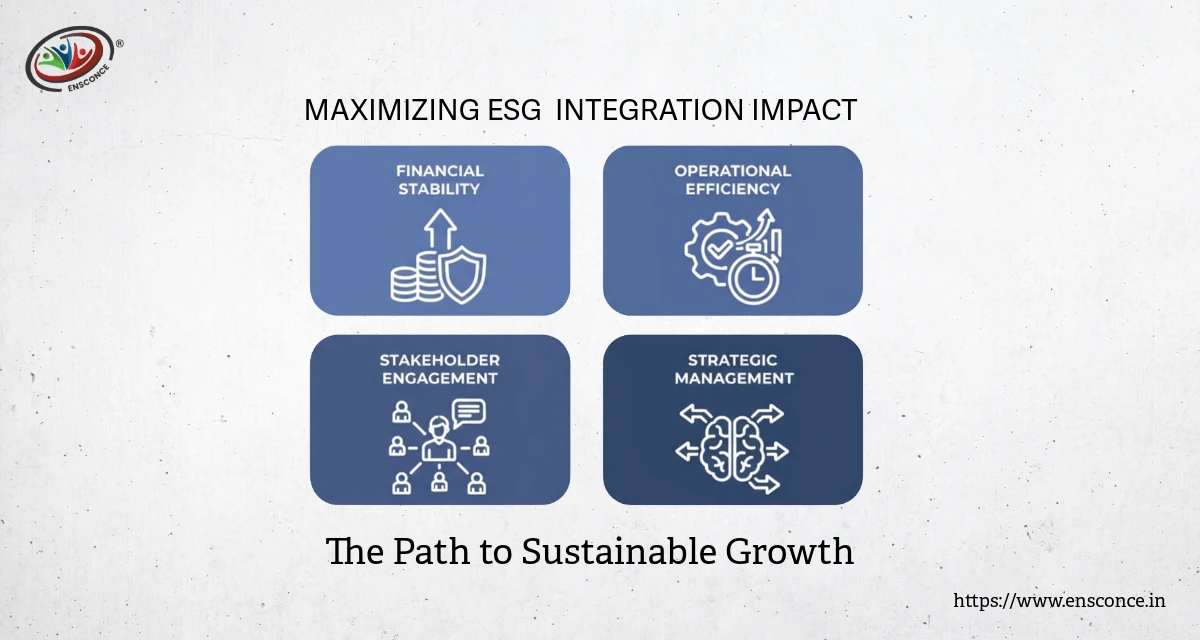How to Integrate ESG into Your Business Strategy for Sustainable Success
For CXOs, long-term success is no longer defined by quarterly profits alone; it's about sustainable growth, resilience, and governance excellence. ESG (Environmental, Social, and Governance) is not just about environmental responsibility; it’s about how effectively your organization uses resources, builds resilient infrastructure, and governs for sustainable value creation.
- 88% of investors now evaluate companies on ESG performance.
- Firms with strong ESG practices report 10-20% lower capital costs.
- Companies embedding ESG into operations achieve up to 60% higher employee retention and measurable brand loyalty growth.
For business leaders, the challenge isn't whether to embrace ESG; it's how to integrate it in a strategic, ROI-driven way that strengthens both the bottom line and long-term competitiveness.
What ESG Really Means for CXOs
ESG is not a compliance checklist; it's a strategic framework that enhances growth levers:
- Environmental: Optimizing energy, infrastructure, and supply chains reduces operating costs by up to 30% while ensuring regulatory readiness.
- Social: Companies with stronger employee and community practices outperform peers by 20% in customer satisfaction scores and see higher productivity.
- Governance: Transparent boards and ethical leadership reduce compliance risks, strengthen investor confidence, and drive long-term shareholder value.
With ESG at the core, organizations don't just survive, they scale sustainably and competitively.
Why ESG Matters for Organizational Growth
- Financial Impact: Strong ESG performers see up to 4.8% higher operating margins and better market valuations.
- Customer Loyalty: 70% of consumers prefer brands aligned with their values.
- Talent Advantage: Millennials and Gen Z, who will form 75% of the workforce by 2030, prioritize employers with credible ESG commitments.
- Risk Management: ESG-aligned companies are 40% less likely to face major regulatory or reputational crisis.
From Intention to Integration: A CXO Roadmap
Assess Your ESG Footprint
- Audit energy, infrastructure, workforce, and governance.
- Benchmark against industry peers to identify value gaps.
Set Measurable ESG Goals
- Example: Cut emissions by 30% by 2030, raise women in leadership to 40% by 2027, achieve 100% supplier ESG compliance.
- Link each goal to KPIs, revenue, cost, talent, and risk metrics.
Embed ESG into Core Strategy
- Allocate resources and leadership accountability.
- Integrate ESG criteria into R&D, supply chain, investment, and customer strategy.
Engage Stakeholders
- Employees → build ESG-driven culture.
- Investors → communicate clear ROI-driven progress.
- Customers → showcase authentic impact.
- Suppliers → enforce responsible practices.
Report with Transparency
- Use GRI, SASB, or TCFD standards.
- Share both wins and challenges to build trust.
ESG as a Growth Engine
- Circular economy models unlock new revenue streams.
- ESG-driven product innovation captures untapped customer segments.
- Governance excellence strengthens investor appeal and valuation multiples.
In short, ESG is not just about responsibility, it's about competitiveness.
Conclusion
Integrating ESG into corporate strategy is not optional, it's a leadership mandate. Organizations that treat ESG as a compliance checkbox miss the bigger ROI: reduced costs, stronger growth, resilient talent, and investor confidence.
👉 For CXOs, the question isn't “Should we invest in ESG?” but “How fast can we embed ESG into our strategy to capture growth and resilience?”



